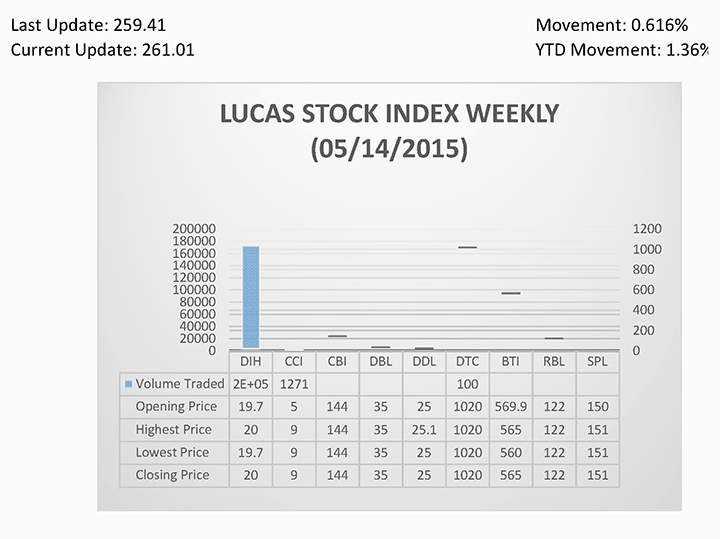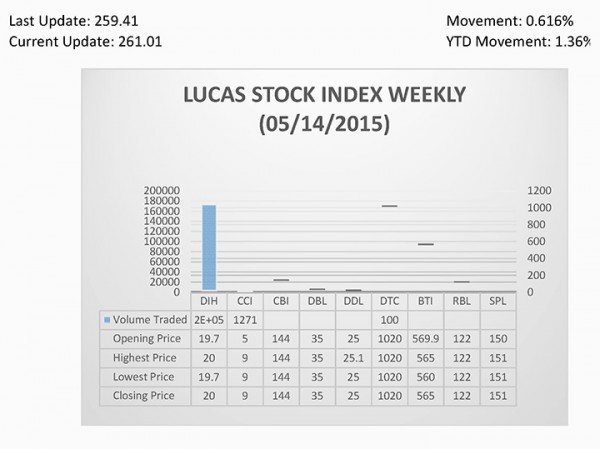Several promises
By the time this article is published Guyana will have a new government. In a closely fought contest, the desire for a unified country prevailed over the desire for a system of partisan and corrupt politics. This writer would like to congratulate Mr David Granger and Mr Moses Nagamootoo for making that happen and on their ascension to the high offices of this land. This writer would also like to wish them well in the task of administering the affairs of the nation.
Many are still wondering though what would make so many Guyanese vote for a system of corrupt public institutions  and glaring inequities. Even as one contemplates the possible answers, attention must turn to the development challenges that the new government will confront. The new government to be formed by the APNU+AFC coalition made several promises in its Manifesto. It will have to build an economy that can meet and serve the security, social and economic needs of all Guyanese. Such an economy would have to be credible and provide assurances to Guyanese at home and in the diaspora that it can be trusted to deliver the change that was promised.
and glaring inequities. Even as one contemplates the possible answers, attention must turn to the development challenges that the new government will confront. The new government to be formed by the APNU+AFC coalition made several promises in its Manifesto. It will have to build an economy that can meet and serve the security, social and economic needs of all Guyanese. Such an economy would have to be credible and provide assurances to Guyanese at home and in the diaspora that it can be trusted to deliver the change that was promised.
The philosophical view of unity is that the economy must work for, and deliver to, all Guyanese the expectations that each has for fulfilling his or her dreams. For a country that has a troubling crime rate, a failing education report, a life-threatening health system and corrupt public institutions, this inclusionary policy will not be easy to implement, but an effort must be made to do so. Despite a per capita income of US$3,800, the starting point for each Guyanese is not the same. At least 30 per cent of the workforce receives less than eight per cent of the national income with some evidence to suggest that that figure could be somewhere in the range of 36 to 40 per cent. So the critical factor is the need for everyone to have equal opportunity at success. Though the government and the people will have separate responsibilities to bring about desired changes, they will have to invest in each other as was done during the election campaign given the compelling need to lift the standards of economic and social progress in the nation.
Guyana tried the managed economic approach a few years after independence which did not yield the desired changes in the economic and social life of Guyanese. The Economic Recovery Programme (ERP) of 1989 with its market-driven philosophy started the reform of the country. The reforms continued under the PPP/C and continued to produce significant returns but those returns were mishandled by the PPP/C government and led to high levels of income inequality, the breakdown in the rule of law and the flourishing of violent crime and corruption. The new government must correct that and do so rapidly.
The things that the new government does are just as important as the climate in which they are done. A community spirit of goodwill to the nation is needed from the people. A cleaner city and surrounding environment could be the product of such goodwill. The public spirit of the citizens must show at this time to help bring this nation back from the decadence of clogged drains and over-silted canals. But the greater responsibility for change will have to come from the new government. There is no off-the-shelf model of development that can be employed by the new administration. However, it should be possible to examine what successful economies are doing to find strategies that could work for Guyana. One possible model that could be examined is that which is referred to as the Nordic model.
Nordic model
The Nordic model is an economic system that is common among the three Nordic countries of Denmark, Finland and Sweden. Since the Norwegian economy has many features of the model and is part of the Nordic cluster, it is often thought of as being part of the Nordic model. Looking at this model might make sense given some of the similar social challenges facing Guyana and the Nordic group of countries. These countries exhibit similar secondary school dropout rates like Guyana. Also, youth unemployment is a problem, even though the average national unemployment rate among them is 6.7 per cent, better than the estimated 11 per cent in Guyana.
The model has three component parts that work together to deliver high standards of living. One part serves as a kind of platform on which the other two parts of the economic system are built. Among the platform factors are the factor endowments of the country, climatic conditions and religion. These platform factors are used to build institutional tools that are vital to the operation and management of the system. The tools that these countries rely on include political freedom, the rule of law, including a strong judicial system, well-defined property rights, good health and good educational standards. Many of these tools, such as the rule of law and well-defined property rights, are critical to the operation of a market-driven economy. The third set of factors is the continuous outcomes of the economic system that tend to be reflected in the economic policies that are pursued by the Nordic countries. High levels of economic achievement enable the country to operate a high tax level and a generous social protection system. An important observation here is that the countries have very strong labour unions which seem able to work with employers to achieve mutually acceptable employment outcomes that do not interfere with the prospects for economic growth.
The model calls for an embrace of open trade, open movement of capital and people and a tax system that is favourable to labour supply. As a result of the employ of this model for over 20 years, the Nordic countries have made significant gains. Three of the four countries identified as using the model place well in the global economic rankings. The World Bank ranking as of 2013 has Norway ranked as the second wealthiest country in the world with a per capita income of US$100,898. Sweden is listed as the seventh wealthiest country in the world with a per capita income of US$60,380 and Denmark is listed as number eight with per capita income of US$59,818. Finland is number 16 with US$49,150. Countries like the USA, Canada, Germany, France and the UK with more orthodox liberal economies place tenth, twelfth, nineteenth, twenty-first and twenty-third in those rankings.
Encourage competition
No one could tell with certainty which factor or set of factors is most influential in the economic success of the Nordic countries. They have large public sectors and embrace the market. They also encourage competition indicating that they operate a mixed economy and that economic growth is a critical objective of the model. The productivity levels of the Nordic countries support the growth objective and point to the usefulness of the model. Some of the performance measures produced by international bodies support this viewpoint. A 2014 Bloomberg report cites Norway as being the second most productive nation in the world with Denmark and Sweden following suit at fourth and seventh places.
Part of the success might stem from the ease with which one could do business in those countries. The World Bank ranks Denmark as the fourth easiest in which to do business. It places Norway sixth, Finland ninth and Sweden eleventh in the 2015 report on the ease of doing business. The users of the Nordic model are also among the top six countries in trading across borders. The production structure of these countries is diversified and international trade is a substantial part of that structure. There is no doubt from their rankings that these countries take competition seriously as well. In the competitiveness report Finland is ranked fourth, Sweden is ranked tenth, Norway is ranked eleventh and Denmark is ranked thirteenth. The foregoing outcomes show that for such a model to work the country needs to have a good business climate and an open economy.
Most countries know that to keep their competitive edge, they must engage in research and development. This is particularly true among the Nordic states which place very well on the research and development scoreboard. Sweden is one of the countries with a ranking of second, Denmark has a ranking of sixth, Finland is ninth and Norway comes in at fourteenth in the Bloomberg ranking of innovation. When it comes to intensity of research and development, Finland is placed number two, Sweden number four and Denmark number six.
Need for balance
These rankings show that there are good reasons to examine what the Nordic countries have done in the past 20 years. They also point to areas in which investment could be made by the new government to keep Guyana on a growth path while seeking to achieve some of the pressing inclusionary social goals pertaining to health, education and the security of the nation. It should be kept in mind that spending on the delivery of social services can outpace spending on the production of goods with the risk that the public budget could outgrow the rate of gross domestic product (GDP). With this reality of Wagner’s law, the new government should keep the need for balance in mind.






